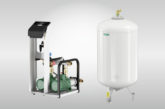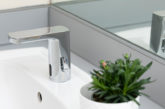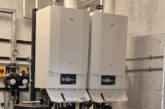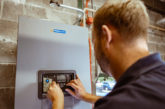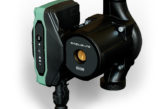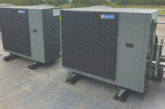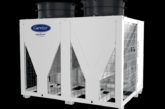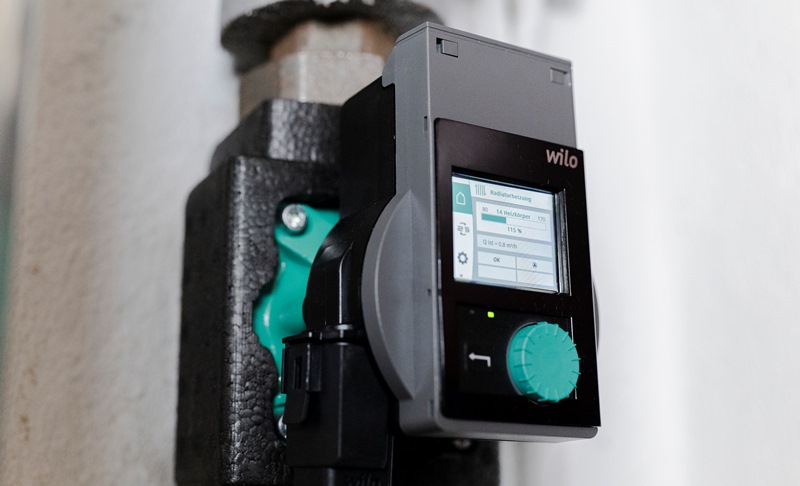
More and more, installers and contractors are being asked to upgrade heating and hot water circulator pumps to offer better energy efficiency as the push toward Net Zero continues. David Williamson, Sales and Marketing Director from Wilo UK looks at how to specify light commercial pumps and what to consider when it comes to installation and maintenance.
In many legacy buildings, heating and hot water circulator pumps are often ‘of an age’, work at one speed only, and operate in silo to other building services. These pumps are typically fixed in speed, use highly inefficient AC motors and offer one mode of operation – either on, or off.
Technology like this simply cannot compete, whether it’s in efficiency, performance, functionality, ease of use, installation or maintenance. Building owners, managers and those with responsibility for running buildings are recognising this, and with the continual journey toward Net Zero, many are now seeking to upgrade these old pumps for newer ones.
This movement is in turn opening up more opportunities for installers and contractors to act as the vehicle to make these improvements happen. However, with a plethora of choice available, simply choosing a circulator pump in itself can be a minefield, let alone then fitting in old buildings and then putting in maintenance plans for these products. To negotiate these challenges, it is imperative installers understand what modern pumps are capable of, and how they can assist them in their jobs.
Specification
Heating and hot water circulator pumps today have many more capabilities compared to old pumps. There has been a lot of innovation in recent years, but the biggest is arguably the advance of electronically commutated (EC) motor technology.
To put this into perspective, switching from a circulator pump with an AC motor to one with an EC motor instead will provide an immediate 30% reduction in energy use. It’s not just EC motor technology that makes circulator pumps efficient though – many of these newer pumps are built with variable speed drives on board. When coupled with variable speed capability and controls, pumps can then become much ‘smarter’ in operation, and work at lower speeds too, meaning energy savings can be increased to approximately 60%.
Some pumps, like the Wilo-Stratos MAXO or the Wilo-Stratos PICO, can also ‘learn’ the operational characteristics of a heating or cooling system. They do this by using Wilo’s Dynamic Adapt Plus and Multi-Flow Adaptation technology. The former allows the pump to continuously adjust and maintain peak performance as system dynamics change, while the latter facilitates communication between the main pump and any secondary pumps within a system. With both, installers can configure and ensure the circulator pump adapts in real-time to demands and works holistically with other building services.
Installation
Helping to choose a pump may just be one part of the equation for installers and contractors, and typically, some of the biggest challenges of these projects is on-site when it comes to demounting and installing the new pumps.
In an old ’light commercial building’, such as a small office block, retail units and restaurants, installers may encounter all manner of unforeseeable, challenging scenarios. This includes poor planning and space management with pipework, tight airing cupboards, plant rooms or service risers, all of which serves to limit access and test installers. Along with this, original plant within these spaces may have been altered and added to, further complicating matters.
Here is where a well-designed product can make all the difference. Big, bulky and heavy pumps will undoubtedly lead to knocks and scrapes and may mean more unnecessary work with getting it to fit. Modern pumps like the Wilo-Stratos MAXO meanwhile are small in footprint, meaning they can help get around these issues, and lead to a quicker completion time. The pump also overcomes traditional headaches of connecting the electrics through its clearly arranged, easily accessible terminal.
Another area to be mindful of is commissioning. Too frequently, poorly thought-out pumps make this step more confusing than necessary. Small analogue displays and manual setting all serve to slow installers down. Here, smart modern pumps like the Wilo-Stratos MAXO can do away with this hassle for installers with one-click commissioning and a settings assistant for pre-set applications, along with a large digital display and intuitive user-interface. Pumps can also come with Bluetooth connectivity too, which is useful if pumps are located at a high level or in small plantrooms – and an added benefit is that with Bluetooth, settings can be copied to other pumps or retained for future use.
Maintenance
By introducing a smart pump into the building, not only does it help with long-term energy efficiency and aid an easier set-up, it also means that returning to a site to undertake maintenance and servicing is much simpler too.
With old, fixed speed pumps, it may only become apparent that there is a problem with them after the heating or hot water has started to malfunction, at which point it is too late and a building, especially a commercial one, cannot afford to take such risks. Newer pumps are equipped to mitigate these issues before they happen.
For example, Wilo’s commercial application pumps come with multiple alarm warning codes that can help indicate if there is a system issue or pump issue. Error codes and alarms can even indicate if there is dirt in the systems or if the pump is running dry – eliminating any potential failure.
Taking the smart view
Heating and hot water circulator pumps play a crucial role in many buildings and are particularly important in commercial applications where there’s a real need and drive to tighten up on energy and water usage.
A clear way for installers to take action is to recommend swapping old, inefficient pumps for newer models with EC motor technology. In this way, they can play their part in the Net Zero movement, as well as save themselves from the headaches of installing, commissioning and maintaining static, ‘dumb’ products.


